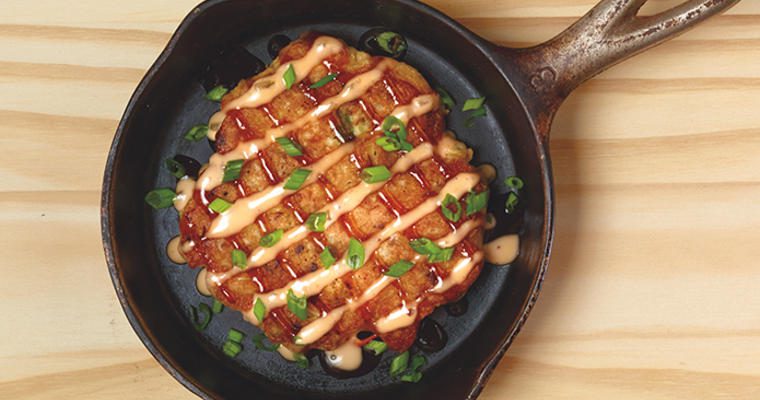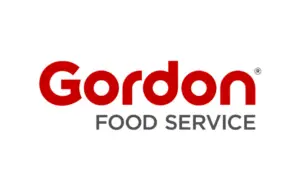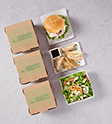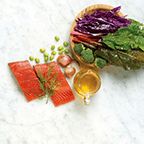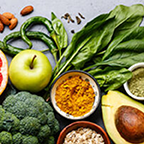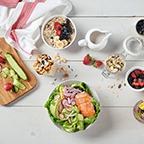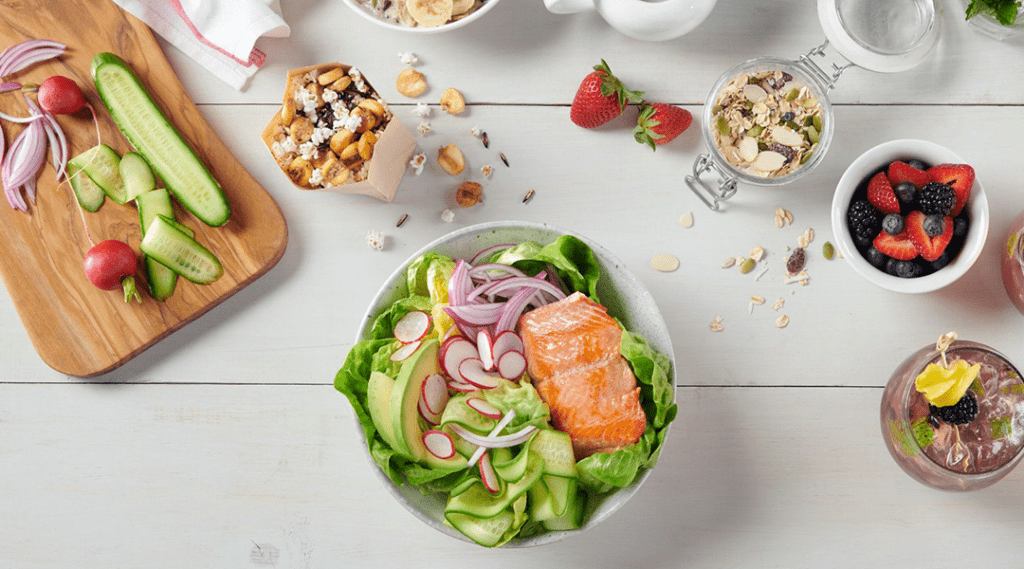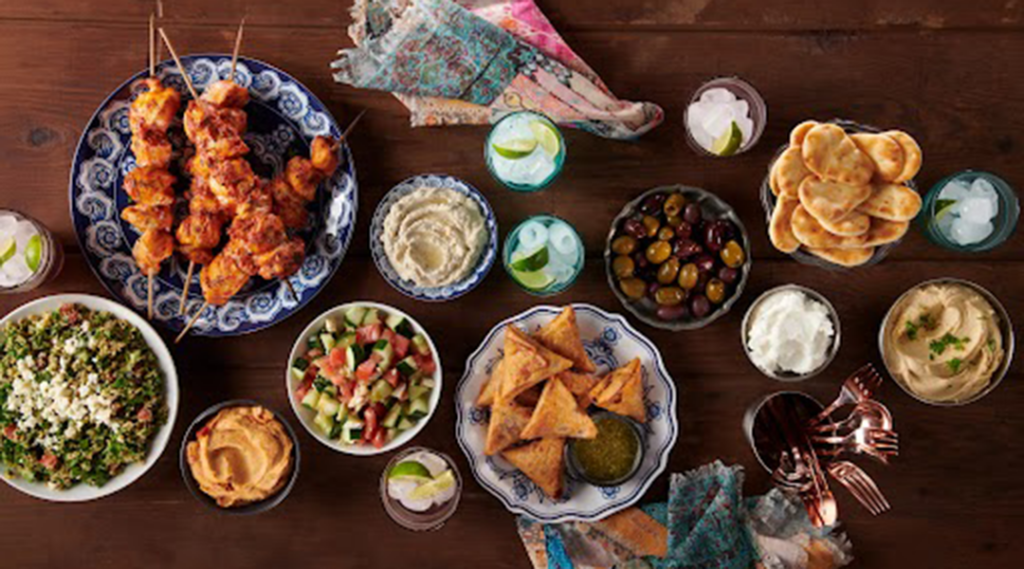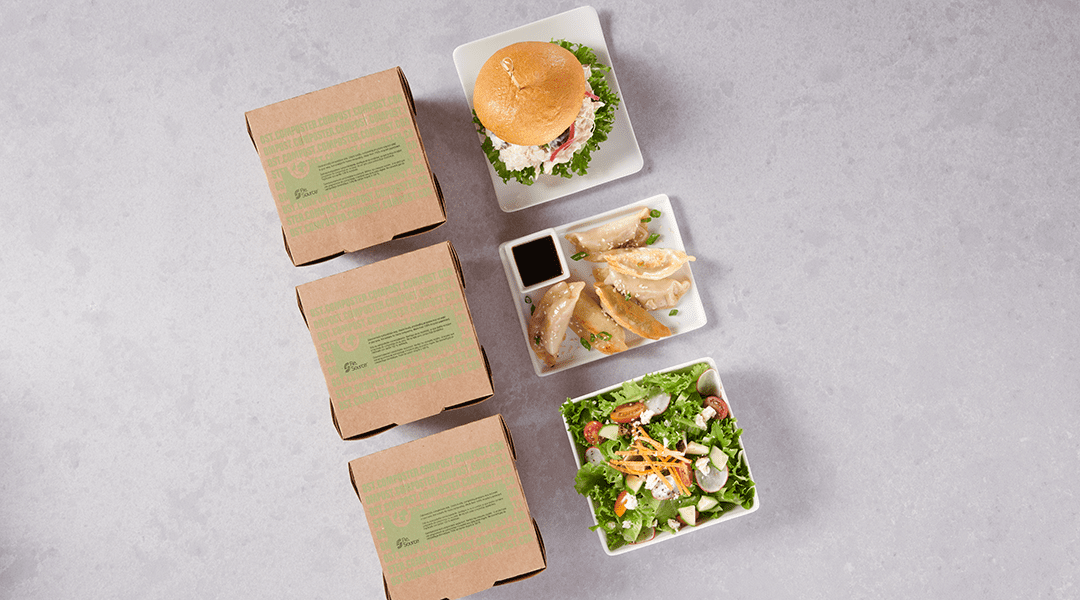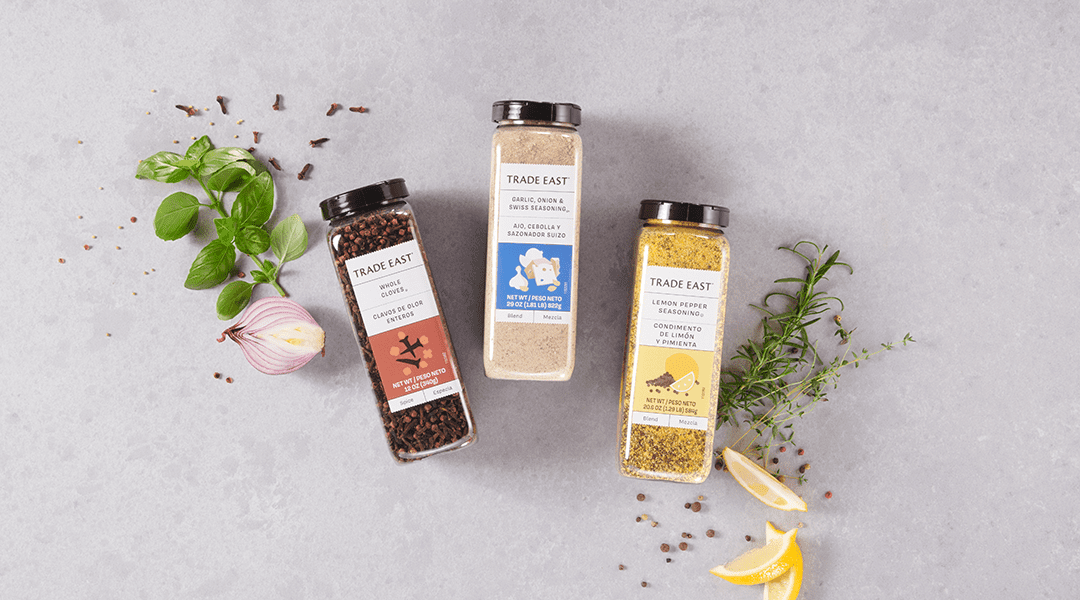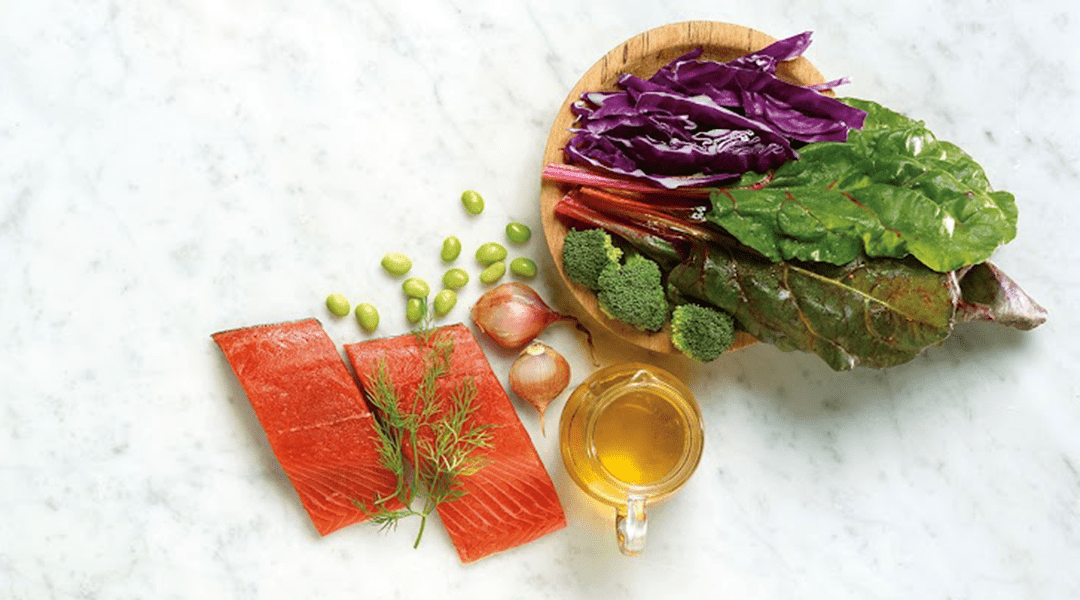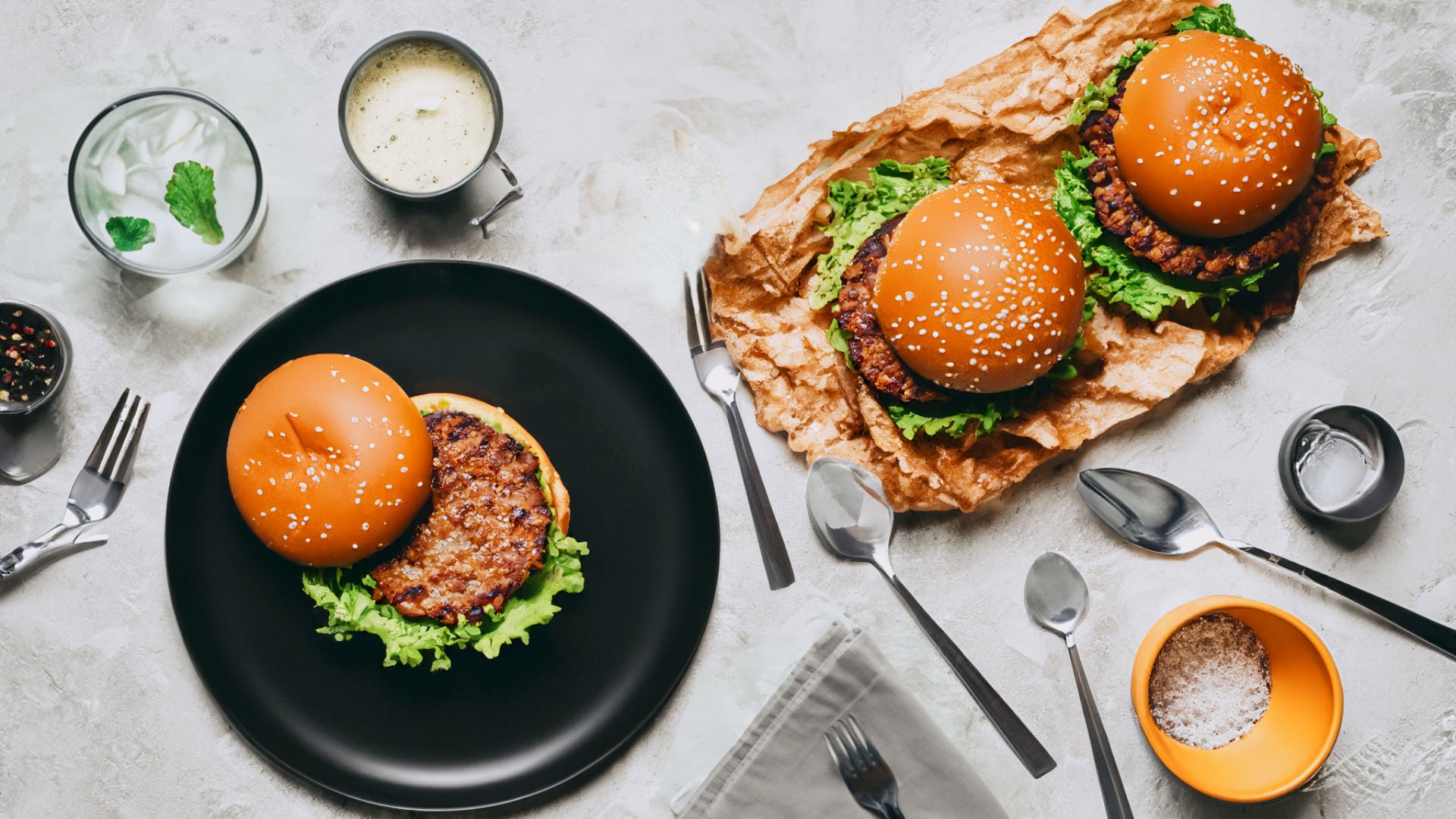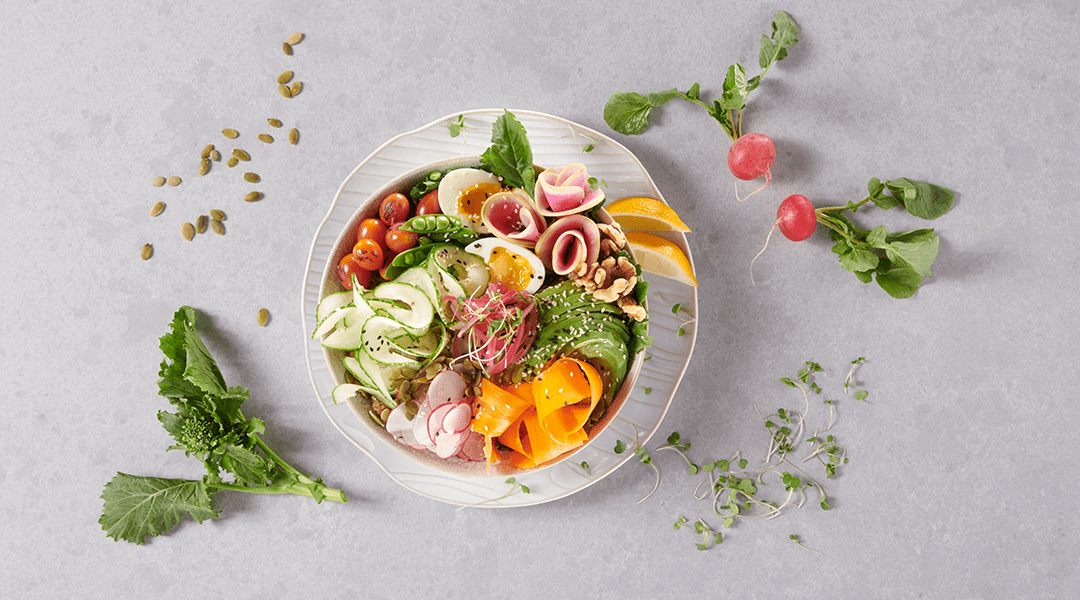With the rise in popularity of all-day menus, pancakes are taking their place at the table at all hours. And, these days, one of the hottest-selling hot cakes is likely served with a microbrew, not syrup. That’s because, however sweet diners may be on sugary flapjacks for breakfast, they are being wooed to the savory side by okonomiyaki (oko-NO-me-ah-key).
Studded with fatty bits of meat or seafood, okonomiyaki—a flavor-forward, fried or grilled savory cabbage pancake that’s a popular comfort-food snack at izakaya, the Japanese equivalent of gastropubs—is finding favor and fans in the U.S.
“The time has come for okonomiyaki on American menus, and it has mainstream potential—particularly with millennials and Gen Z,” says Gordon Food Service Corporate Consulting Chef Gerry Ludwig, CEC. “Diners are looking for new flavors, and this is absolutely the kind of thing that flavor-savvy diners are looking for.”
Of course, operators are always seeking ways to improve margins, and, as Ludwig points out “the entry cost for serving okonomiyaki is not that high.” Moreover, it offers the perfect cross-utilization opportunity, as add-ins and sauces can be drawn from what’s already in inventory.
Another benefit: Menuing okonomiyaki doesn’t increase labor needs. “Okonomiyaki is extremely simple to prepare,” Ludwig says. “It’s more an assembly of ingredients than something complicated.” No highly skilled labor is required, either. “Even a good griddle cook who cooks eggs could cook this,” says Miami-based Chef Keith Beane, the Gordon Food Service Culinary Specialist for south Florida.
The technique
The basic formula, Ludwig explains, is two parts chopped or shredded cabbage and one part savory pancake batter. Due to the high ratio of cabbage, cooking time is significantly longer—about 10 minutes—than for standard pancakes. Halfway through cooking, top the pancake with penny-size bits of a fatty meat (pork belly, blanched bacon, pork shoulder, etc.) or little chunks of shrimp, calamari or octopus—aim for a bit of protein in every bite. Flip the pancake and press down lightly. The end result is tender, delicate, very cabbagey and lusciously flavored by the meat or seafood.
Size, shape and even the technique can all be varied. Okonomiyaki can be tiny or plate-size. At Bar Goto[cq] in New York okonomiyaki is laid out on the griddle as a rectangle, sauced, folded into thirds and flipped three times, yielding layers of flavor encased in a crispy surface.
Applications
Okonomiyaki offers an ideal canvas for simple or upscale signature items—go with what best fits your market.
Shareables. In a savory application, pancakes make an ideal sharing dish. Mix and match flavors for sharing platters. Make them silver-dollar style and menu a trio or a five-piece sampler on a rectangular plate.
Bar/snack menus. Sweet-salty okonomiyaki pairs well with beer, cocktails and, especially, sake. “If I had a sports bar, I’d put okonomiyaki on the menu immediately,” Ludwig says.
All-day breakfast/all-day dining menus. Add chopped bacon, veggies, mushrooms or spinach, grill and serve with sunny-side-up or over-easy eggs on top or on the side.
Global mashups. One example: For a Latin take on okonomiyaki, substitute chorizo for pork belly and shrimp, add green onion and dashi flakes and sauce with cilantro mayo, Beane suggests.
Veg-centric dishes. Use just tiny amounts of meat for full flavor.
Riffs on American comfort food. One variation that’s picking up a lot of traction is cheese. Incorporate umami-rich white cheddar, Parmesan and Gruyère for grilled-cheese flavor in okonomiyaki. Add sun-dried tomatoes and mushrooms for pizza-lovers.
Seasonal specials/limited-time offers (LTOs). Use okonomiyaki as a showcase for local produce and to emphasize freshness on your menu.
Toppings
Sauces. Mayonnaise, aïoli and sour cream are ideal bases for okonomiyaki sauces, as they enhance mouth-feel and meld well with diverse flavors. Apply sauces decoratively using a squeeze bottle. Create your own signature sauces using a variety of ingredients. Examples:
- Tonkatsu or other sweet, thickened soy sauce.
- Korean BBQ Sauce or gochujang chili paste.
- Plum sauce or mango chutney (for a sweet counterpoint to the savory pancake).
Garnishes. Enhance perceived plate value by adding flavor and color to the plate. Examples:
- Katsuobushi—aka bonito flakes.
- Dashi flakes.
- Asian chili threads.
- Finely chopped green onions, chives or other fresh herbs.
The bottom line? This is no flash in the pan. “Okonomiyaki will satisfy the curiosity of dining consumers,” Ludwig says. “This opportunity is on the level of a no-brainer. For the vast number of dining consumers, it will be love at first bite.”
Okonomiyaki on Menus
- Pastrami, Sauerkraut, Bonito-Flake Okonomiyaki—Shalom Japan, Brooklyn.
- Vegetarian Osaka Okonomiyaki. Seasonal veggies, otafuku sauce and ponzu dressing—Okiway, Brooklyn.
- The Classic Okonomi-Yaki. Pork belly, rock shrimp, calamari, yakisoba noodles, okonomi-sauce, kewpie mayo, dried bonito flakes and pickled red ginger—Bar Goto, New York.
